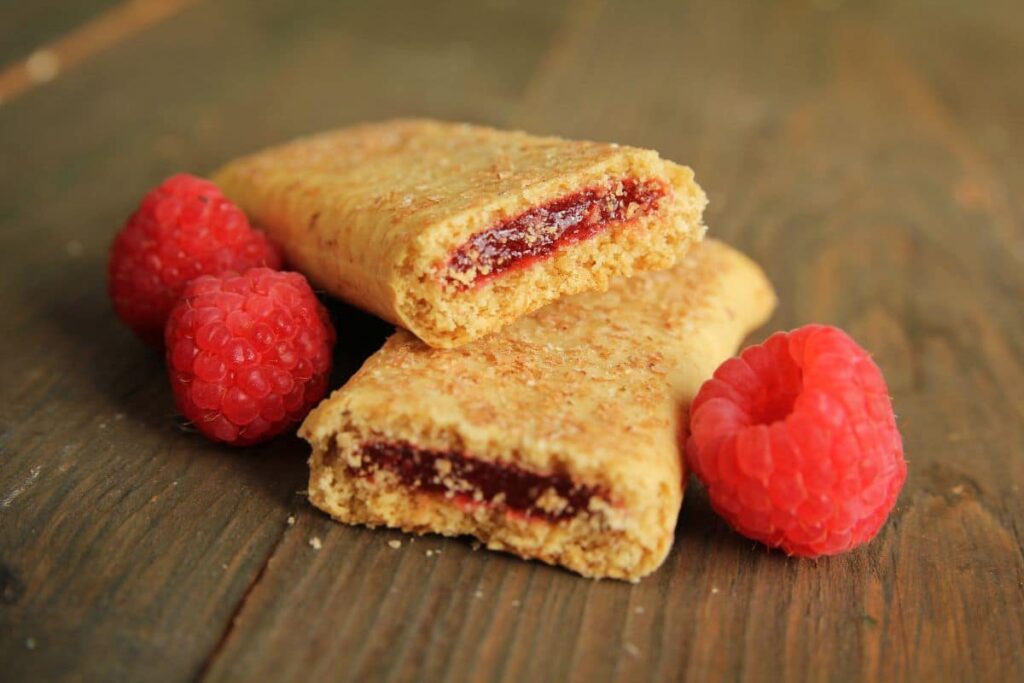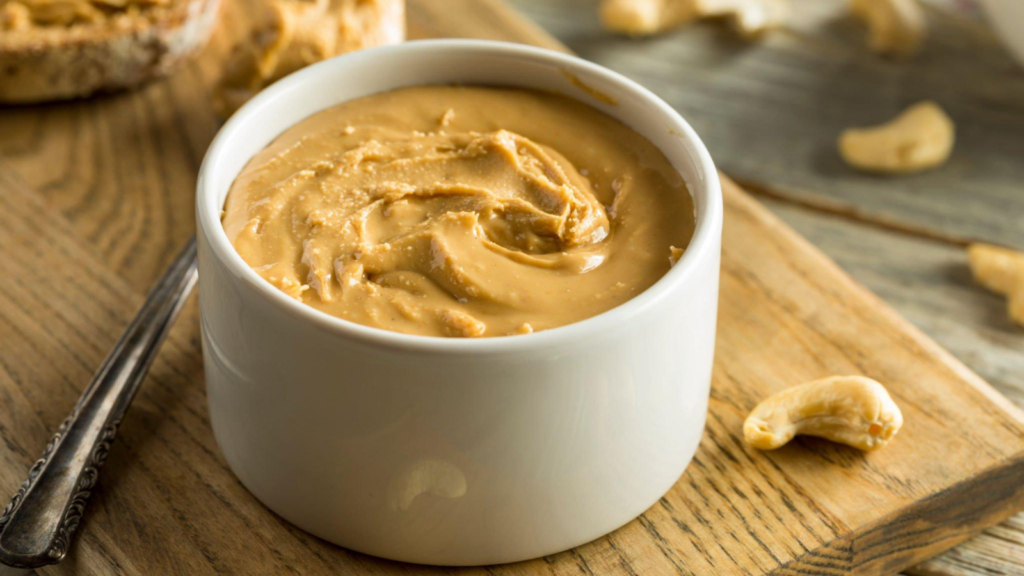Nutri-Grain bars are a popular snack option, often marketed as a convenient and nutritious choice for busy mornings. But are Nutri-Grain bars truly healthy? This article takes a deep dive into their nutritional profile, ingredients, and the claims surrounding these soft-baked breakfast bars to answer the question: Are Nutri-Grain bars healthy?
What Are Nutri-Grain Bars?
Nutri-Grain bars, produced by Kellogg’s, are soft-baked breakfast bars available in various flavors like strawberry, apple cinnamon, and mixed berry. Their packaging highlights phrases such as “Made with Real Fruit,” “No High Fructose Corn Syrup,” and “8g Whole Grains,” which aim to position them as a wholesome snack choice. However, marketing claims don’t always align with nutritional reality.
Nutritional Profile of Nutri-Grain Bars
Here’s a breakdown of the nutritional facts for a typical Kellogg’s Nutri-Grain Soft Baked Strawberry Breakfast Bar:
| Nutrient | Amount per Bar | % Daily Value |
|---|---|---|
| Calories | 130 | – |
| Total Fat | 3.5g | 5% |
| Saturated Fat | 0.5g | 2% |
| Sodium | 140mg | 6% |
| Carbohydrates | 25g | 8% |
| Fiber | 1g | 4% |
| Sugar | 12g | – |
| Protein | 2g | – |
While Nutri-Grain bars provide small amounts of essential vitamins and minerals such as calcium, iron, and vitamin A, their high sugar content and low fiber and protein levels raise concerns about their healthfulness.
The Sugar Problem
One of the most significant drawbacks of Nutri-Grain bars is their sugar content. A single bar contains approximately 12 grams of sugar, nearly half the daily limit recommended for women by the American Heart Association (25 grams). While the packaging suggests that this sugar comes from fruit, most of it qualifies as added sugar—a combination of sweeteners like dextrose, fructose, invert sugar, and corn syrup.
Added sugars are linked to numerous health risks, including increased blood pressure and higher chances of cardiovascular disease. Unlike whole fruits, which provide natural sugars along with fiber and vitamins, Nutri-Grain bars use fruit puree concentrate—a processed form that lacks the nutritional benefits of real fruit.
Fiber: The Missing Link
Fiber is essential for digestion, maintaining bowel health, lowering cholesterol levels, and keeping you full longer. The American Heart Association recommends at least 21–25 grams of fiber daily for women under 50 and 30–38 grams for men under 50. However, Nutri-Grain bars contain only about 1–2 grams per serving.
Despite being made with whole grains and fruit puree concentrate—two ingredients typically rich in fiber—the processing significantly depletes their fiber content. This makes Nutri-Grain bars less effective at providing satiety compared to other high-fiber snacks like fresh fruits or whole-grain toast.
Protein Deficiency
Protein plays a vital role in muscle building, exercise recovery, and satiety. With only 2 grams of protein per bar, Nutri-Grain bars fall short in this category as well. For comparison:
- RXBARs typically contain around 12 grams of protein.
- Lärabars provide about 4–6 grams depending on the flavor.
Low protein levels make Nutri-Grain bars less likely to keep you full or serve as an adequate post-workout snack.
Questionable Ingredients
Nutri-Grain bars include several additives that raise health concerns:
- Natural Flavors: A vague term that can encompass solvents and preservatives.
- Carrageenan: Known to cause gastrointestinal dysfunction in animal studies.
- Citric Acid: Linked to inflammation in sensitive individuals.
While they also contain whole food ingredients like oats and apple puree concentrate, these are overshadowed by the presence of additives that may not align with a healthy diet.
Comparing Nutri-Grain Bars to Other Snack Bars
Here’s how Nutri-Grain bars stack up against other popular options:
| Bar Type | Sugar (g) | Fiber (g) | Protein (g) | Additives |
|---|---|---|---|---|
| Nutri-Grain | ~12 | ~1–2 | ~2 | Yes |
| RXBAR | ~5 | ~4 | ~12 | No |
| Lärabar | ~14 | ~4 | ~4–6 | No |
| Quest Bar | ~1 | ~13 | ~20 | Yes (artificial sweeteners) |
Nutri-Grain bars fall short in terms of fiber and protein while containing higher amounts of added sugar compared to healthier alternatives like RXBARs or Lärabars.
Are They Healthier Than Candy Bars?
Nutri-Grain bars are often considered healthier than candy bars due to their lower fat content and inclusion of vitamins. However, this comparison sets a low standard. While they may be better than candy bars nutritionally, they still contain high levels of added sugar and lack sufficient fiber or protein to be considered truly healthy.
Healthier Alternatives
If you’re looking for convenient snack options that are genuinely nutritious:
- Fresh Fruit & Nuts: Pair an apple or banana with a handful of almonds for natural sweetness and protein.
- Homemade Protein Bars: Use simple ingredients like oats, nut butter, honey, and dried fruits.
- High-Fiber Snack Bars: Look for options with at least 5 grams of fiber per serving.
Real-Life Example: Breakfast Swap
Instead of grabbing a Nutri-Grain bar for breakfast:
- Opt for whole-grain toast topped with almond butter.
- Add a side of fresh fruit like berries or an orange.
This swap provides more fiber, protein, and natural vitamins without the added sugars found in processed snack bars.
Healthy Alternative to Nutri Grain Bars
If you’re searching for healthy alternatives to Nutri-Grain bars, consider options that are lower in sugar and higher in fiber and protein. Fresh fruit paired with nuts or Greek yogurt with berries are excellent choices that provide natural sweetness and sustained energy. Homemade snack bars, such as granola or quinoa-based options, allow you to control ingredients and avoid added sugars. Other alternatives include hard-boiled eggs for protein or whole-grain chips with hummus for fiber-rich snacking. These real-food options are not only nutritious but also free from the additives commonly found in processed bars.
Are Nutri Grain Bars Healthy for Toddlers?
Nutri-Grain bars can be an occasional snack for toddlers, but they are not ideal for regular consumption due to their high added sugar content (12g per bar) and low fiber (1g) and protein (2g) levels. While marketed as containing whole grains and fruit, much of the sugar comes from processed ingredients like fruit puree concentrate, rather than whole fruit. Toddlers need snacks that provide lasting energy, such as those with at least 2 grams of fiber and protein and minimal added sugar1. Healthier alternatives include fresh fruit with nut butter, yogurt, or homemade oat-based bars for balanced nutrition.
Final Verdict: Are Nutri-Grain Bars Healthy?
Nutri-Grain bars offer convenience but fall short on key nutritional metrics. Their high added sugar content combined with low levels of fiber and protein makes them an inferior choice compared to whole foods or other snack bar options. While they might work as an occasional treat or emergency snack, relying on them regularly is not advisable if you’re aiming for a balanced diet.
For those seeking healthier alternatives:
- Choose snacks rich in whole grains, fiber, and natural proteins.
- Avoid products with excessive added sugars or questionable additives.
In summary: Nutri-Grain bars are not inherently unhealthy but are far from ideal when it comes to nutrition.


